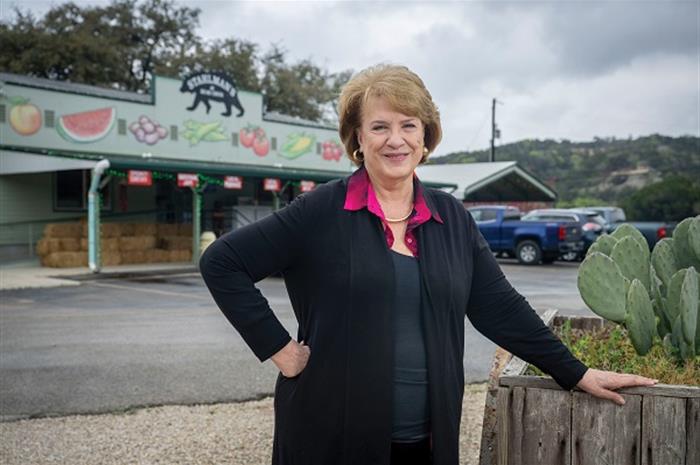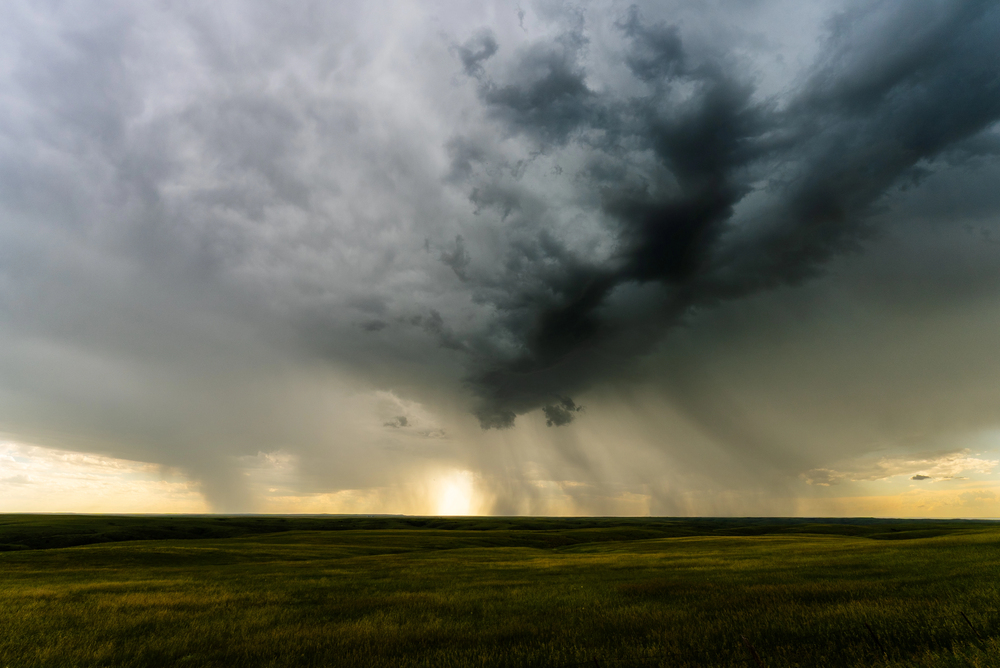AnneMarie McPherson Spears is IA news editor.
Farm to Fork: Finding Your Specialty in the U.S. Food Supply Chain

By: AnneMarie McPherson
Everyone’s gotta eat. Agriculture, food and related industries contribute 5.5% to U.S. gross domestic product and provide 10.4% of U.S. employment, according to the most recent data from the USDA Economic Research Service.
Corn and soybean production are expected to approach or exceed record levels during the 2023-2024 growing season, according to the USDA’s Agricultural Baseline Projections, with domestic demand and trade projected to grow as well for these staple products. U.S. livestock production is also projected to grow through 2032.
Meanwhile, the food service market in the U.S. is estimated at $820 billion in 2024 and is expected to reach $1.37 trillion by 2029, growing at a compound annual rate of nearly 11%, according to Mordor Intelligence, a market research company.
It’s also no surprise that the U.S. food processing and manufacturing industry is also seeing growth, with 22,407 food production facilities in 2023, up 2.1% from 2022, according to MNI, a publisher and compiler of industrial data. The U.S. manufacturing industry only imports 11% on average, meaning the lion’s share of produce is domestically sourced.
However, the U.S. food supply chain isn’t without its challenges, ranging from inflation to catastrophes and geopolitical issues. But for independent insurance agents seeking to diversify their book of business in a hard market, there are plenty of niche opportunities throughout the domestic food cycle.
Here’s how agents are protecting the country’s food supply and how agents looking for a new specialty can find new clients from farm to fork.
Farms
John O’Dell, agriculture specialist and producer at Alliance Insurance Services in Greenville, North Carolina, has only one regret about specializing in farm insurance: “I wish I had started earlier,” he says. After growing up on a farm in a rural area, he earned a degree in poultry science and worked at a major meat processing company for 13 years.
“The industry changed a lot with so many restrictions, and the farmers were getting the short end of the stick,” O’Dell says. “It got to the point where I felt like the bearer of bad news all the time.” When he began looking for a new job, his cousin—Christopher Cook, founder and president of Alliance Insurance—reached out and told him that the agency was beginning to work with carriers that write farm insurance.
“He told me, ‘I can teach anybody how to sell insurance, but I need somebody that understands the farm niche,'” O’Dell recalls. “That was about five years ago, and I’ve been doing this ever since. I’m dealing with the same clientele—I love talking with the farmers, helping them, getting to know them.”
For Bill Pearson, owner of Huisenga-Pearson Agency in Sibley, Iowa, entering the crop insurance niche was a way to help his neighbors. “I was doing crop insurance when crop insurance wasn’t cool,” he says. “The real satisfaction comes from building relationships and trust.”
Fifteen years ago, Pearson found that government advocacy was another way he could support his community. “I didn’t need to be on any boards or anything like that to be effective,” he says. “I just wanted to be a voice for rural America about how precious our food supply is. Many farmers and ranchers don’t feel that they have a voice.”
“Our farmers deserve our respect and thanks, and we are very blessed to have a nation that can provide the quality of food we have not just for our country but for the world,” Pearson says. “Our food supply should be a national security issue. We found out how fragile it is when the country shut down due to the pandemic.”
Challenges
Research from the American Farm Bureau Federation (AFBF) found that natural disasters in 2022 caused $21.5 billion in crop losses in the U.S. Only half of these losses, mostly caused by drought and wildfire, were protected by insurance. However, AFBF’s estimates did not include infrastructure damage, livestock loss, horticulture crop loss or timber loss. Further, 2023 brought a record 28 natural disasters with losses of $1 billion each, according to the National Oceanic and Atmospheric Administration. While statistics about the impact of catastrophes in 2023 haven’t been released at the time of publication, they are likely to be higher than in 2022.
The USDA offers programs to help farmers recover financially from natural disasters. Since 2018, the department has provided supplemental appropriations, known as “ad hoc assistance,” covering crop and livestock losses above those needed for the permanent programs, such as the Livestock Indemnity Program, Tree Assistance Program and Noninsured Crop Disaster Assistance Program. Since the fiscal year 2018, the $19 billion appropriated for ad hoc disaster assistance has exceeded the $4.4 billion expended under the permanent disaster assistance programs.
“I’d like to see the government get out of the ad hoc disaster funding and run that money through the federal crop insurance program (FCIP),” says Pearson, who is chair of the Big “I” Crop Insurance Subcommittee.
“Actuarial calculations in states that are having issues need to be addressed—they know what the trends are,” Pearson says, pointing to Texas, which has experienced sweeping wildfires and winter storms, and Nebraska, with wind and hail issues. “These issues should be taken care of at both the state and federal level. When companies pull out of certain markets or certain states, it’s bad for farmers, ranchers and the whole industry.”
Eli Gillespie, owner, president and middle-market producer at Gillespie Insurance Services in Redlands, California, finds a significant challenge his farm clients face is “increasing costs of property insurance due to the fact that most farms are located in wildfire zones where policies are getting canceled,” he says. “Replacement coverage is not always available.”
Weather trends also play an enormous role in the global market forces that farmers depend on. “The biggest risk is weather—not just here where U.S. farmers grow crops,” says Kendall Jones, president and CEO of ProAg®. “Drought, excess moisture, temperature volatility, wind and other weather conditions impact all agricultural products. Weather in South America significantly affects market forces that then impact the prices that U.S. farmers can get for their products.”
“Market prices for all agricultural products are also impacted by the economy, global economics and political decisions,” Jones says.
In fact, of primary concern for farmers is the current environment of low commodity prices paired with high production costs. “The price of all our commodities is going down, but the cost of all our inputs is going up,” O’Dell says, relaying concerns a client shared in a recent conversation. “It costs more to buy the tractor and the combine, costs more to pay for gas and diesel, costs more to pay workers … but the bottom line isn’t increasing to match. So, your average American farmer is far more budget-minded and financially aware than they were 10 to 20 years ago.”
Since 2020, costs for agricultural inputs like fertilizer, fuel, land, machinery and labor increased by 28%, according to the USDA’s first 2024 cost-of-production forecast. While 2024 should see a slight decline in production costs for major field crops like corn, soybeans, wheat and peanuts, input costs for this year’s growing season are predicted to be the third highest of all time, behind 2022 and 2023. Meanwhile, commodity prices declined from their record or near-record levels in 2022, according to a report from the Food & Agricultural Policy Research Institute (FAPRI), a think tank at the University of Missouri.
“We’re at a crossroads where the amount of coverage farmers can buy through the FCIP isn’t covering the input costs,” Pearson says. “We rely on private products from approved insurance providers (AIPs) to fill the gap for the producers.”
In the public-private partnership of crop insurance, “the private side has to make money to cover its cost of capital,” he says. “The private sector delivers the program and receives reimbursements from the federal government for program delivery. These reimbursements haven’t had an inflation adjustment since 2015. It’s really impacted the crop insurance program.”
Trends
O’Dell has noticed more agricultural clients seeking higher liability limits. “Farmers have always had their property miles and miles away in the middle of nowhere, but cities are starting to creep out and people are moving closer in,” he explains. “Now they have people right up to their property line. These farmers feel like the average American thinks that farmers who mass produce crops or meat are the bad guys and feel like they could be attacked at any moment. They’re asking if their livelihood is protected if something were to happen.”
Equipment values are crucial, a recent trend brought by high inflation and low inventory, coupled with high demand. “Tractors and farm equipment don’t lose value like a car does,” O’Dell says. “It’s almost necessary for me to increase coverage.”
However, “equipment coverage doesn’t typically have an inflation guard built in and carriers don’t automatically assume that a piece of equipment, such as a tractor, will increase in value,” says Stephanie Bittner, director of farm strategy at Liberty Mutual and State Auto Insurance. “If equipment valuations have not been regularly reviewed as part of the renewal process, equipment may be worth much more than the insured value.”
Another recent development agents can help farmers manage is the rise in demand for organic food. From 2011 to 2021, U.S. organic retail sales increased by an average of 8% a year, hitting about 5.5% of all retail food sales in 2021, according to the USDA.
“It can be challenging to insure, because it’s a new trend—but I hope that trend increases,” O’Dell says. With stringent regulations and standards for organic food, “you really have to have your wits about you,” he adds. For instance, “some people may want to process their own meat on site, for which the farm has to go through the USDA standard certifications, and some insurance carriers are still hesitant about that.”
Agricultural technology has been around for quite a while in the farming community, with more farmers owning tractors with GPS operating systems, GPS satellites, technologies for controlling chicken house indoor temperature and humidity, and other developments. “There’s even apps now, like the Climate FieldView™ app that monitors exactly how much rainfall you’re getting on each tract of land,” O’Dell says.
Of course, “all these things are expensive and you need appropriate insurance for that, and equipment breakdown coverage is key for some of these,” he adds.
“While it hasn’t come to us yet in North Carolina, out west they’re planting wheat fields with cavalries of drones—and someone has to insure those drones,” he adds. “That’s not a standard risk companies have been writing for years. There’s a lot of new technology that the insurance companies aren’t sure yet how to rate and cover.”
Making the Sell
As underwriting restrictions continue to tighten amidst farmers’ concerns about adequate coverage and input cost, independent agents have the opportunity to shine. “We have multiple carriers that are strong in their markets, we can offer options, and we take a needs approach rather than a sales approach,” O’Dell says. “Would it be more cost efficient to blanket all your equipment? Does it make sense to take some of the older items off coverage altogether?”
“I don’t like selling insurance based off the cheapest premium, but you must be able to offer something competitive because these farmers can’t afford to pay more for insurance while they’re also paying more for everything else,” he adds.
O’Dell recommends that agents interested in pursuing a farm niche build a deep knowledge of the industry and the concerns of the people in the industry. “Farmers are very interesting, hard-working people, but they’re also a little hesitant to approach people that aren’t from their industry,” he says.
“One thing that’s important to know is how much it has rained recently,” he says. When he first started his insurance career, he was mentored by an insurance agent from Kansas who was experienced in agriculture. “One thing he did every year was give out a rain gauge with the agency’s logo on it.”
“Farmers expect their agents to understand their operations and the risks they face,” Jones adds. “Agents need to bring data-driven solutions so that farmers can clearly understand the impact of their risk on their overall financial position.”
Manufacturing
For Julie Davis, sales and marketing director at Barnard Donegan Insurance (BDI) in Seguin, Texas, the food and beverage company sector is the latest niche in a three-decade career of specialty experience. In fact, she’s narrowed down even further within the specialty to serve consumer-packaged goods companies (CPGs).
CPGs manufacture and produce items consumed everyday by the typical consumer, including food items, craft beer and snacks. “The food and beverage sector is a very big part of the Texas economy,” Davis says, a native Texan. “I had the opportunity to relocate back to Texas, and I love Texas and I love working for a smaller, niche brokerage firm like BDI. That’s when I began doing risk management for food and beverage companies.”
Davis—pictured above, and at left with David Pope, president & CEO of BDI, at Stahlman’s at Bear Creek, a farm stand in New Braufels, Texas—got her start in insurance working part-time for a Farmers agent while she was in high school. “He taught me how to do cold calling, and I did that for two years part-time,” she says. “That became a foundation for moving into other areas. When I finished college, I worked for an insurance company for a couple years on a major national food chain.”
She then had the opportunity to work for a global broker in the construction specialty, and then joined Aon to build their presence and niche in the technology industry sector for 15 years before joining BDI.
“Each of those positions built on top of the other,” Davis says. “That little Farmers agent during high school and college—God bless him. He’s no longer living, but he was the foundation for me learning how to do sales.”
Challenges
BDI conducts the “FoodBevShield© Risk Management Survey and Guide,” an annual survey of approximately 270 CPGs. The 2023 iteration found that the No. 1 risk for organizations was pandemic-related changes in health practices and regulations, followed by inflation and changes in commodity prices, with third place going to product liability, product recall and contamination.
As BDI prepares to conduct its 2024 survey, “that pandemic item is no longer going to be No. 1,” Davis says. “I would say this year the biggest risk is inflation changes and changing commodity prices. Product liability, product recall and contamination are likely to still rank pretty high.”
“The risk is that they can’t control the price of the commodity, which is very volatile,” she explains. “And in some cases, it may be a lack of availability or the price of the ingredient going up tenfold.”
By segment, food and beverage CPGs consider their top challenges to be raw material costs, adjusting for price increases, and financing future growth, according to the BDI survey.
“We also asked companies how they identify risk in their organizations,” Davis continues. While 35% identify risk at board or advisor meetings, “28% have no formalized process for identifying risk in their organization, which is rather problematic.”
Additionally, while 43% of companies polled have a written risk management plan to manage product recall, “many of the risk management plans are not done in connection with their supply chain—and, quite frankly, if you’ve created a product recall plan and you then put it on the shelf, it’s only somewhat effective,” Davis says. “You need to work on that plan with suppliers and co-packers.”
A similar concern is procedures on product liability. Only slightly more than half—52%—of companies in BDI’s survey had internal procedures for handling product liability incidents, and only 46% utilize legal review for packing, shipping materials and product guides.
Trends
“This is an exciting time for the industry, full of product transformations and creativity,” says Brian Gerritsen, advanced manufacturing practice lead, Travelers. “We’re noticing food and beverage companies lining shelves with new types of products, such as alternative proteins and dairy substitutes. We’re also seeing a lot of startups enter the market, as well as celebrities and other influencers marketing their own products.”
One trend Gerritsen sees is the use of contract manufacturers. “New companies and products entering the fray, including many of those backed by celebrities or influencers, often commission the manufacturing of their goods to a third party rather than handle the production themselves, since working with a contract manufacturer can help get goods on the shelves faster,” he explains. “These contract manufacturers can handle the processing, bottling and packaging, and some will also transfer the product to a wholesaler that ships it to grocery stores and other retailers.”
This process provides agents and brokers with an opportunity to deliver substantial value to their customers, Gerritsen points out. “Food and beverage companies want to make sure that they’re not held liable for the contract manufacturer’s actions,” he says. “Agents and brokers can offer their customers risk transfer best practice and help ensure that the appropriate quality control oversight is in place and maintained for them.”
Companies are increasingly aware of product recalls and the associated reputational risk. “An emerging trend is recalling a product not because the FDA says you have to, but because it’s a good business decision,” Davis says. “Reputational risk is becoming pretty important.” However, only 42% of the firms BDI polled have product recall coverage in place, with 33% not having the coverage and 25% unsure whether they did.
“There are certainly changes in regulatory risk,” she adds, noting that “a lot of rules and regulations have tightened up around product label accuracy. If your product label is not really accurate, it does need to be recalled.”
“The changing state regulatory environment can also be challenging for food manufacturers to navigate,” Gerritsen agrees. “There’s an opportunity for agents to help their customers be aware and remain compliant in every state where they do business.”
Technology adoption and increased automation are available throughout the manufacturing process, including robotics, employee wearables, and Internet of Things (IoT)-connected devices that monitor refrigerator temperatures. These advances can offer benefits—such as decreased labor costs, reduced errors and increased productivity—but also bring cyber and workplace risks, Gerritsen notes.
“For example, as factories and plants implement more connected devices, cyber risk becomes a greater concern because each device creates a new possible entry point for cybercriminals to exploit,” he says.
Making the Sell
For agents looking to insure the food manufacturer niche, Gerritsen points out that smaller, local food processors are a great place to start. “Smaller businesses face the same risks as larger ones, but they don’t typically have the same staffing and budgets to support their risk management efforts,” he says. “This provides agents with an opportunity to serve as the business’s trusted risk management adviser.”
“My personal motto is ‘Grow intelligently, risk selectively,'” Davis says. “I preach that to every CPG company I meet. It’s not just about buying insurance policies, it’s about managing risk issues. The most rewarding part of my job is when I can get a CPG company to understand and appreciate the value that mindset can add to growing the company.”
On that note, an agent looking to break into the specialty must learn the risk issues. “Don’t be out there just telling them you can quote their business,” Davis says. “What you need to do is become a visible expert in the niche you’re building. You need to be the go-to person that clients seek.”
Distributors
While the inland marine market shares in the broader property & casualty sector’s challenges, including inflation, extreme weather and addressing coverage gaps, “the market outlook remains positive for 2024,” says Loren Kippels, inland marine underwriting officer for The Hartford and chairperson of the Inland Marine Underwriters Association (IMUA) Southeast Regional Advisory Committee. Looking ahead, Kippels anticipates the year will bring “an increased use of technology, data analytics and product innovation to address emerging trends and exposures.”
The U.S. food transportation link represents “a particularly delicate aspect of the supply chain due to stringent regulations like the Food Drug and Cosmetic Act and the Food Safety Modernization Act (FSMA),” says Joe Coffey, vice president and chief underwriting officer of inland marine and construction energy marine, Travelers. And, “unlike transporting electronics or building supplies, food commodities demand specialized conditions, including proper equipment sanitization and temperature control.”
In her work serving CPG companies, Davis notes that CPG distributors have many property exposures in common with manufacturers, such as ingredients, packing material, special machinery and property of others. Distributors also have a product recall exposure—and sometimes convincing distributors of their exposure in this area is a challenge.
“Oftentimes, distributors will take the stance of ‘we don’t hold any liability, we’re just the distributor,’ but that’s not really true when you peel back the onion,” she says. “You’ve got to look at the contract between the distributor and other property.”
“Sometimes it takes an insurance broker to help educate distributors on the risk issues,” Davis says.
Challenges
The food transportation sector is largely still in recovery mode from the pandemic, says Tom Nasso, chief underwriting officer, Falvey. With a driver shortage due to truckers leaving the segment or retiring, increased regulation and compliance, and the rise in social inflation and nuclear verdicts inflating the cost of claims, trucking firms “are faced with higher costs,” Nasso says, “and some of these smaller transportation companies then tend to fail.”
The labor shortage means the transportation industry is less equipped to handle recent regulations that have come into play, Nasso says, one of which is the FSMA.
Although the FSMA took effect over a decade ago, “it remains one of the top challenges for the food transportation chain,” Kippels says. “The regulation obligates any business in the chain of custody for a food product—from manufacturing to transportation to storage—to make sure that everything they do is secure and does not lead to spoilage or contamination. All parties need to be able to confirm that no one could tamper with the product.”
“In the past, businesses had to mitigate the risk of physical damage. However, today, because of the legislation, if there is a presumption that someone tampered with a food product—even absent of physical damage—the business faces stricter burden of proof requirements and is at greater risk of loss and litigation,” Kippels continues, pointing out that “this creates a gap between traditional insurance, which required there to be physical damage, and the legislation, which establishes a threshold of reasonable belief of adulteration.”
Additionally, food and beverage commodities are frequent targets for cargo theft, Coffey says. “Given the temperature sensitivity and slow replacement process for certain commodities, such as avocados or nuts, cargo theft poses a substantial threat to the continuity of the supply chain,” he says.
Trends
Because of the increased security and temperature monitoring requirements in the FSMA, IoT technology has been embraced by shippers and carriers alike, including cold chain temperature monitoring devices. “This helps with loss control and potential claims,” Kippels says. “While the law does not require these devices be installed, they respond to many of the obligations introduced by FSMA, which is also beneficial from a loss mitigation perspective.”
Increasingly frequent and severe natural disasters are enveloping the inland marine market as well, Nasso says. “Insurers have seen this category grow significantly in the past decade, and it went from just anxiety over earthquakes and flood and hurricane to losses from wildfires, severe convective storms, hail and even just winter storms,” he says.
Looking ahead, Kippels anticipates that electric vehicle charging stations and battery energy storage systems will become an emerging risk that will require new coverages in the inland marine insurance market. “This aligns with the development of more electric vehicles on the road, including cargo trucks and delivery vans,” he says.
Making the Sell
Agents looking to enter the inland marine specialty will find a paradox waiting for them. “One of the unique aspects of inland marine insurance is that it’s both highly specialized and universal—almost all the risks associated with inland marine exposures have a distinct twist, which may not be adequately insured and could win an agent the right to review the entire account,” Kippels says.
Because inland marine spans a diverse range of industries, “it’s crucial to align with carriers capable of addressing unique exposures,” Coffey says. “Not all carriers offer the full spectrum of products or possess the requisite underwriting proficiency.”
Restaurants
Alexandr Krupka, agent at Mountain Insurance in Wheat Ridge, Colorado, got his break in the restaurant insurance niche when the agency was appointed with a carrier that focuses on insuring restaurants and bars. “It was [a very difficult appointment] to obtain, and when we got it, my dad, who’s the agency owner, came into my office and told me ‘You’ve gotta run with this,'” he says.
Five and a half years later, restaurants and bars comprise about 70% of Krupka’s client volume. “When you focus on a niche, you tend to get good at what you’re doing—I don’t want to be a jack of all trades, master of none. I’m focusing on this, so I know the right questions to ask,” he says.
Working with specialized carriers is key for Krupka. “They typically offer coverages that other carriers don’t, such as assault and battery or no waiting period on business income,” he says. “And their claims service is superior when it comes to the restaurant industry, because that’s what they work in all day.”
Challenges
“By and large, the biggest challenge is government legislation,” Krupka says. “I think it’s exacerbated in Colorado compared to other states.” For instance, as of January 2023, it is illegal to sell eggs that aren’t cage free in Colorado. And this January, a new Colorado state law came into effect banning plastic foam products for restaurant take-out containers and ready-to-eat food. “One of my clients told me the costs [of containers] for to-go orders are going to go from 2 cents to 78 cents, which is a huge leap,” he says.
And with minimum wage increasing in Colorado in January from $13.65 or $10.63 for those who make tips to $14.42 or $11.40 with tips, “restaurants are being nickeled and dimed,” Krupka says. “It’s not necessarily a bad thing—people need livable wages—but it’s definitely going to be survival of the fittest going forward for restaurants.”
In California, where the minimum wage is $16 as of Jan. 1 and $20 for fast food workers as of April 1, the jump “has scared a lot of fast-food restaurant owners because they know they are now facing a 20%-plus increase in their payroll, which will extend to their workers comp,” Gillespie says. “So, whereas workers comp has been a safe line of insurance—rates are not increasing—the cost is still going up and restaurant owners are going to be watching their bottom line much closer as their costs balloon.”
Catastrophes pile on top of the legislative environment. “Colorado is a big CAT state with wind and hail and wildfire, and sometimes the losses here for wind and hail exceed the losses for fires,” Krupka says. With Boulder County hit hard by the Marshall Fire in 2021, 2023 brought record amounts of hail to the state, including a dozen reports of four-inch hail.
“Property rates are insane,” Krupka says. “Underwriters are scrutinizing everything. They want to see gross sales, profit and loss reports, good housekeeping. They’re doing more in-person inspections.”
“While I think a lot of carriers were getting kind of complacent, now we’re at the other end of the extreme,” he continues. “I even have one carrier that insists that restaurants store soiled linens and towels in a metal container to prevent spontaneous combustion. It’s not a huge deal—just run out to Home Depot—but for a lot of clients, they’ve never had to deal with these tight requirements before.”
As an agent, “I don’t sell price, I want people to buy a good quality policy, but more often than not my main focus is helping people save money where they can,” he says.
In a price-conscious environment, where a restaurant owner who doesn’t know much about insurance could be tempted to cut necessary coverage, a trusted adviser is all the more important. “I don’t know a thing about cars, and I don’t really want to, so I take my car to a mechanic that I trust who gives sound advice—that’s the same thing I do with my customers: I want them to feel assured that their policy is in good hands,” Krupka says. “My job is to look out for them and advise them on their best decisions.”
Trends
Restaurant and foodservice sales are forecast to top $1 trillion for the first time in history, according to the National Restaurant Association’s “2024 State of the Restaurant Industry” report. Further, the industry’s workforce is projected to grow by 200,000 jobs, with 45% of operators needing more employees to meet customer demand.
Despite the challenges of the economic environment—nearly all restaurants say higher labor costs and food costs are an issue, and 38% say their restaurants were not profitable last year, according to the report—restaurants are remaining on the front burner.
“A few years ago, a lot of people were afraid that restaurants were really going to suffer,” Krupka says. “I was the only one saying ‘No, they’re not,’ and now I’m proving myself right.”
Restaurants continue to evolve after the pandemic. While Krupka has seen clients begin to pull back from offering delivery to avoid fees, the takeout trend is here to stay.
“I have a client that’s a small Indian restaurant, and the owner said his sales have just exploded due to takeout,” he says. And currently, a bill is working through the Colorado state Senate that would make permanent a pandemic-era law allowing the sale of alcoholic beverages for take-out and delivery.
Making the Sell
Just because restaurant owners are cost-conscious doesn’t mean it’s a bad time to discuss proper coverage. Krupka has seen an increase in interest in risk mitigation and protection. “People are actually more worried about financial disaster striking, and they want to do more to make sure they’re covered,” he says. “It’s an opportune time to discuss coverage, because they realize this is their biggest asset and there is no recourse if something happens and they’re not covered.”
“When opportunity comes knocking, take advantage of it,” Krupka recommends. “If this carrier hadn’t come along, I almost certainly wouldn’t be where I am today.”
“Speaking a second language helps too; I speak Spanish,” he adds. “And be willing to work until 2 in the morning.”











